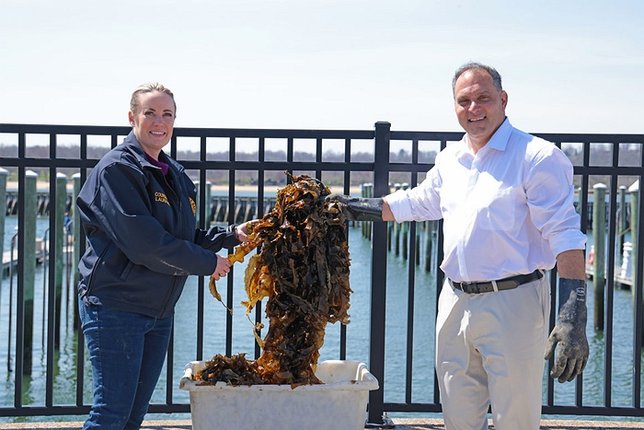The Town of Oyster Bay has harvested the last of its sugar kelp to be used to treat landscaping at the town’s golf course and its other parks facilities. After it is harvested the kelp will be dried and composted.
The project was initiated in cooperation with Adelphi University, SUNY Stony Brook, and Cornell Cooperative Extension and now the town grows over 3,000 feet of kelp – the equivalent of 10 football fields – in Harry Tappen Marina, Theodore Roosevelt Memorial Park Marina, TOBAY Beach Marina, Oyster Bay Harbor and Cold Spring Harbor Conservation Management Areas.
Sugar Kelp is a large brown seaweed that naturally seizes carbon from its environment as it grows. Kelp is grown in the winter months and is harvested in the spring before waterways are in use by boaters and water sports enthusiasts. Kelp helps to improve the balance of the ecosystem in the waters.
“In continuing our commitment to the environment, this new Farm to Fairway initiative provides dual benefits as kelp significantly reduces nitrogen in our waterways helping to improve water quality, and decreases our dependence on chemical fertilizers on land,” said Oyster Bay Town Supervisor Joseph Saladino.
Saladino said that kelpis 100% organic, dense in nutrients, and does not net an increase in nitrogen through stormwater runoff pollution making it a great natural fertilizer.
“When applied to fairways specifically, it helps to increase root growth, improve appearance, promote seed development and enhances natural resistance of the fairways to stresses such as disease, drought, and insect pressures,” he said.










